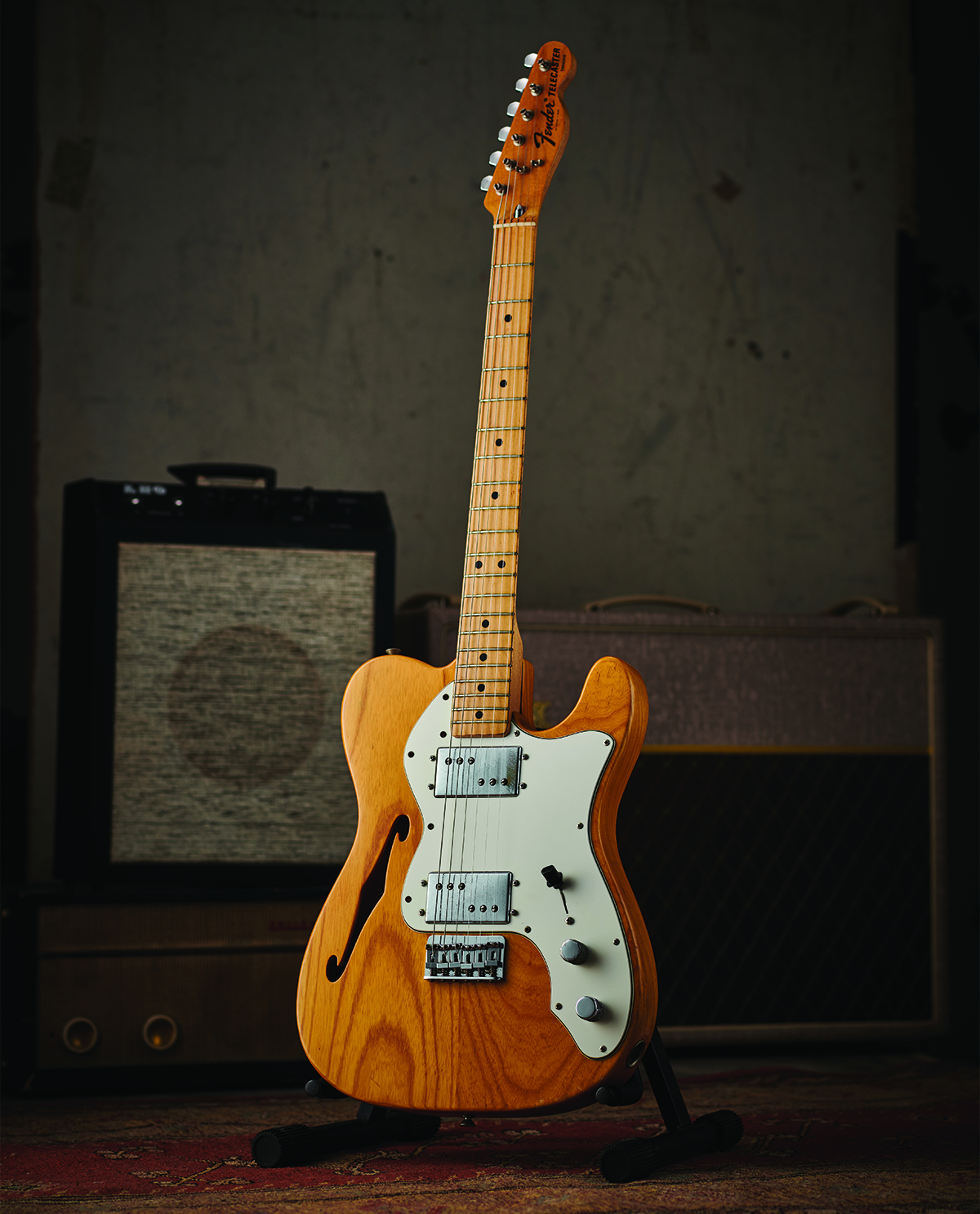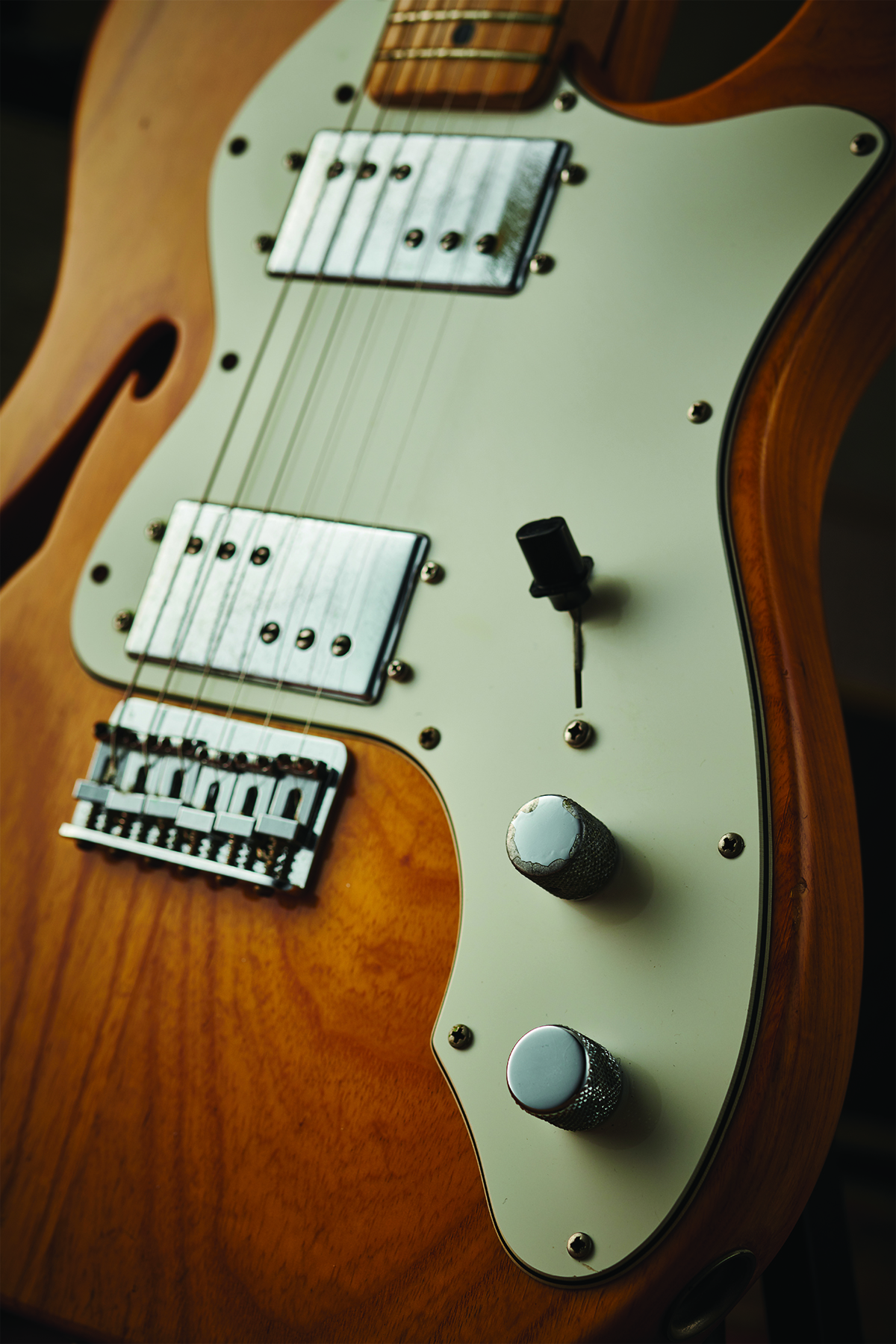Think all 1970s Fenders suck? Seth Lover helped create a Telecaster range that remains one of the decade's shining moments
With its Wide Range humbuckers, the revised Fender Telecaster Thinline gets higher marks than most of its contemporaries.

Fender never offered a “deluxe” rendition of the Stratocaster until 1987, more than three decades after that model’s introduction. By contrast, the Telecaster proved ripe for modification on several occasions long before the Strat reached that milestone. I’m not talking about the evolution of components and appointments that defined the chronological march of all Fender electric guitars through the company’s early years, but rather the unveiling of a souped-up or upgraded rendition that appeared along-side an original model.
Leo and company did just that with the Telecaster Custom in 1959, a mere nine years after it was introduced as the Broadcaster. The Telecaster Custom featured a bound body and a then-new rosewood fingerboard. The next change came nearly a decade later when Fender lightened the load of heavier ash stocks with the Thinline model, a chambered Telecaster with an f-hole on the upper bout.
But the Telecaster Thinline would soon undergo significant revisions of its own.
In 1971, Fender’s owner, CBS, began to implement a series of major design changes that would impact its guitars, including the Tele Thinline. Midway through that year, a version of the guitar appeared bearing the company’s new Wide Range Humbucker pickups.

Designed by Seth Lover, the former Gibson engineer behind the humbucking pickup, the Wide Range was designed to sound characteristically Fender — bright, crisp and articulate — while being fuller and more powerful, and rejecting 60-cycle hum. With it, Fender could finally compete in the rock territory dominated by Gibson.
The Wide Range pickup even looked somewhat like the full-size humbucker Lover had developed for Gibson a decade earlier, although it was approximately 3/8 inches longer and inch wider, and had its visible adjustable pole pieces in a three-and-three formation, in opposing rows.
Significantly, those threaded pole pieces were made from CuNiFe magnets,
an alloy of copper, nickel and ferrite. This blend of metals produced a magnetic material hard enough to cut threads into (something not possible with alnico), allowing for adjustable pole pieces. Simultaneously, it retained the Fender pickup-design archetype of positioning the magnetic poles within the pickup’s coils, rather than using bar magnets beneath the coils, feeding steel poles within, as in the Gibson archetype. Such construction was a big part of the Fender tone formula, helping to retain the maker’s signature twang, even in a humbucking pickup.

Following their 1971 debut on the Telecaster Thinline, the Wide Range pickups showed up the following year in the neck position of the Telecaster Custom, with a traditional single-coil Tele pickup in the bridge position. The Custom also gained a new four-control layout and toggle-style pickup selector switch, similar to Gibson guitars.
All the latest guitar news, interviews, lessons, reviews, deals and more, direct to your inbox!
The move was clearly designed to appeal to the many blues, rock and jazz players who for years had been modifying their Teles by adding a Gibson humbucker in the neck position for a thicker, warmer tone. An entirely new Telecaster, the Deluxe, was released in early ’73 according to most accounts and featured the Custom’s switching array, Wide Range humbuckers in the neck and bridge positions, and an enlarged Strat-style headstock.
The ’74 Telecaster Thinline shown here displays all the key features and so-called innovations introduced with the model’s redesign in 1971. They include Fender’s then-new “bullet” headstock-positioned truss-rod adjustment nut, as well as the three-screw neck attachment with Micro-Neck-Adjust (a.k.a. Tilt Neck) neck-angle adjustment bolt, all of which were seen on the Stratocaster beginning partway through 1971.

Rather than the standard Telecaster’s three tone-enhancing steel bridge saddles, these models employed the same die-cast Mazak (a.k.a. Zamak) saddles used on the Strat. This pot-metal alloy of zinc, aluminum, magnesium and copper allowed cheaper and easier component fabrication, but many guitarists found it detrimental to the guitars’ sustain and resonance, even if the six individual saddles arguably allowed for more precise intonation adjustment.
Promoted as beneficial new features at the time, the three-bolt neck and bullet-head adjustment nut have, together, long been regarded as the most obvious outward demarcation point between the “good” early CBS Stratocasters and the inferior examples that followed. Most Telecaster fans have similar feelings about their preferred model. Still, these solid, versatile early humbucker-loaded Fenders now retain a certain cache with rock, blues and roots players.
While the quality of Fender guitars made in the ’70s in general tends to be derided, and occasionally with good reason, the second version of the Telecaster Thinline has a lot going for it. Despite being aimed at the rock guitar market, the guitar proved more appealing to blues, punk, grunge, alternative and indie-rock players in the decades that followed.
The list of major names who have wielded one or another of these Wide Range Humbucker–equipped Teles — Thinline, Custom and Deluxe included — is long and includes Tab Benoit, Carrie Brownstein, Keith Richards, Leroy “Sugarfoot” Bonner, Thom Yorke, Chris Shiflett and several others.
Dave Hunter is a writer and consulting editor for Guitar Player magazine. His prolific output as author includes Fender 75 Years, The Guitar Amp Handbook, The British Amp Invasion, Ultimate Star Guitars, Guitar Effects Pedals, The Guitar Pickup Handbook, The Fender Telecaster and several other titles. Hunter is a former editor of The Guitar Magazine (UK), and a contributor to Vintage Guitar, Premier Guitar, The Connoisseur and other publications. A contributing essayist to the United States Library of Congress National Recording Preservation Board’s Permanent Archive, he lives in Kittery, ME, with his wife and their two children and fronts the bands A Different Engine and The Stereo Field.

